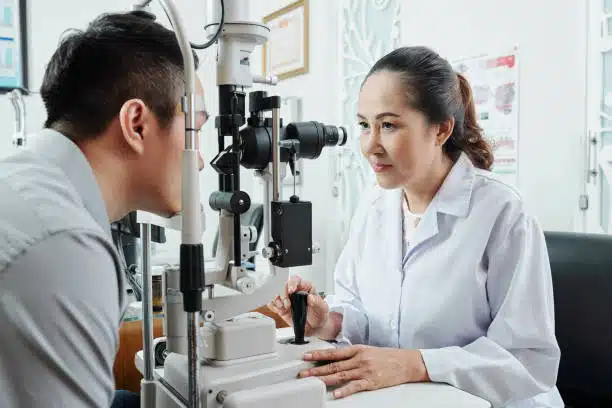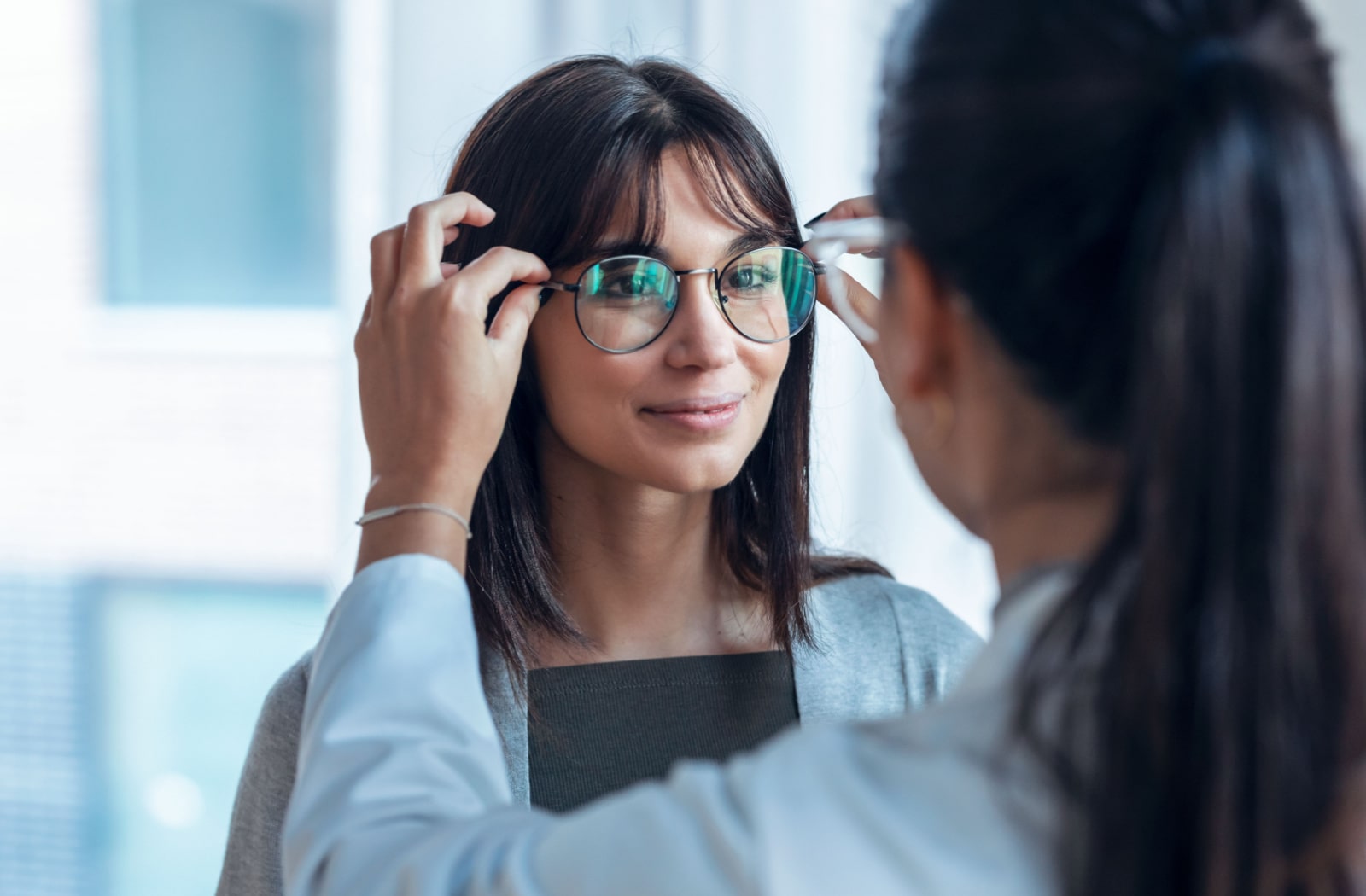Why Selecting an Eye Doctor Optometrist is Necessary for Your Eyes
Why Selecting an Eye Doctor Optometrist is Necessary for Your Eyes
Blog Article
Checking Out the most recent Technological Improvements in Optometry and What They Mean for Eye Doctors
From the accuracy of Optical Comprehensibility Tomography to the nuanced insights supplied by AI-driven diagnostic devices, these technologies are setting new requirements in individual analysis and treatment. As these improvements penetrate the practice, optometrists are encountered with the challenge of accepting these tools to improve individual end results.
Innovations in Diagnostic Devices
Progressing the field of optometry, innovations in analysis tools have actually revolutionized the means eye care specialists assess and detect eye problems and aesthetic problems. The past decade has witnessed considerable technical innovations, making it possible for even more comprehensive and accurate assessments. Optical Comprehensibility Tomography (OCT), as an example, offers high-resolution cross-sectional photos of the retina, permitting for the very early discovery of conditions such as glaucoma and age-related macular degeneration. This non-invasive imaging method has come to be essential in modern optometric technique.
Another key development is the intro of advanced corneal topography systems, which map the surface curvature of the cornea with precision. These tools are especially advantageous for fitting get in touch with lenses and detecting corneal disorders. Moreover, digital retinal imaging has transformed standard ophthalmoscopy, using in-depth, breathtaking views of the retina that promote complete aesthetic evaluations.
The development of wavefront aberrometry has likewise been critical, making it possible for the analysis of refractive mistakes with unrivaled accuracy (Opticore Optometry). This innovation assists in customizing rehabilitative lenses and enhancing medical outcomes for refractive surgical procedures. Jointly, these analysis advancements encourage eye doctors to provide remarkable person treatment, guaranteeing very early treatment and customized therapy methods, inevitably improving aesthetic health results
AI in Patient Management
Building on the foundation of advanced diagnostic tools, the incorporation of fabricated knowledge (AI) in client monitoring represents a transformative leap for optometry. AI systems are progressively employed to enhance efficiency, accuracy, and customization in patient treatment. By evaluating substantial quantities of data, AI can determine patterns and forecast potential eye conditions, allowing eye doctors to tailor interventions a lot more efficiently. This capacity is critical in handling persistent eye conditions such as glaucoma and diabetic retinopathy, where early discovery and constant tracking are essential.
In addition, AI-driven platforms promote streamlined person interactions and management procedures. Automated organizing, virtual assessments, and individualized follow-up strategies not just boost client fulfillment however additionally enhance time management for professionals. These systems can triage patients based upon the seriousness of their conditions, making sure that those in vital need receive timely attention.
Moreover, AI enhances decision-making by supplying optometrists with evidence-based recommendations and therapy pathways. By incorporating data from digital wellness documents, AI devices offer insights that notify professional choices, lowering the threat of errors and boosting client results. As AI proceeds to develop, its duty in patient management will likely broaden, improving the landscape of optometric care.
Breakthroughs in Retinal Imaging
In the realm of optometry, retinal imaging has actually witnessed exceptional technical improvements that are boosting diagnostic capabilities and client care. Developments such as Optical Comprehensibility Tomography (OCT) and fundus photography have reinvented exactly how eye doctors analyze the retina and envision. OCT, specifically, supplies high-resolution, cross-sectional photos of the retina, enabling the in-depth assessment of its layers. This capability is indispensable for very early detection and management of conditions like glaucoma, diabetic retinopathy, and age-related macular degeneration.
Improved imaging modalities like OCT angiography are further refining analysis precision. This non-invasive method maps blood circulation in the retina, supplying essential insights into vascular health without the requirement for dye shots. Furthermore, adaptive optics modern technology is being incorporated into retinal imaging systems to fix eye aberrations, delivering unmatched image quality. Such innovations help with the recognition of minute retinal changes that might symbolize illness development.
Moreover, advancements in artificial intelligence are increasing retinal imaging by making it possible for automatic evaluation of large datasets. These systems assist optometrists in identifying patterns a sign of pathology, therefore enhancing analysis accuracy and effectiveness. Jointly, these technologies are changing retinal imaging into a foundation of contemporary eye treatment, enhancing end results and expanding therapeutic possibilities.
Teleoptometry's Expanding Role
Teleoptometry is progressively ending up being a vital part of eye care, driven by developments in digital communication and diagnostic devices. As optometry welcomes electronic transformation, teleoptometry facilitates remote examinations, enabling eye doctors to expand their solutions past typical limits. This is specifically useful in rural and underserved areas where accessibility to specialized eye care is usually minimal. By leveraging high-resolution video conferencing and advanced retinal imaging, optometrists can carry out detailed eye tests from afar, guaranteeing timely medical diagnosis and therapy.
The assimilation of fabricated knowledge (AI) additional boosts teleoptometry, enabling the analysis of aesthetic information and assisting in the detection article source of ocular conditions such as glaucoma and linked here diabetic retinopathy. AI-powered algorithms can quickly analyze complicated imaging data, providing eye doctors with beneficial understandings that boost clinical decision-making.
Furthermore, teleoptometry sustains connection of treatment via seamless combination with electronic health and wellness documents (EHRs), allowing eye doctors to preserve extensive patient backgrounds. This guarantees that patients obtain consistent and personalized care even when consulting with various practitioners.
Regardless of these advantages, difficulties stay, consisting of making sure data protection and taking care of individual assumptions. Nevertheless, teleoptometry stands for a considerable stride towards more easily accessible, efficient, and patient-centered eye treatment. As technology develops, its duty is poised to expand even more.

Future Patterns in Eye Care
A myriad of cutting-edge fads is established to improve the future of eye treatment, driven by technical innovations and the evolving requirements of clients. One considerable pattern is the assimilation of expert system (AI) in diagnostics, which assures to enhance the precision and effectiveness of eye exams. AI formulas can assess vast amounts of data from retinal photos, possibly spotting conditions like diabetic retinopathy and glaucoma earlier than typical techniques.
Additionally, individualized medication is acquiring grip in optometry, with hereditary screening educating personalized treatment strategies. This technique intends to optimize person results by customizing treatments to individual hereditary profiles. Wearable technology, such as smart call lenses, is likewise on the horizon, supplying real-time monitoring of intraocular stress or glucose degrees, therefore supplying constant understandings into systemic and eye wellness.
The adoption of augmented truth (AR) and digital reality (VR) in training and individual education and learning is one more emerging fad. These modern technologies use immersive experiences that can boost understanding and skills both for eye doctors and individuals. As these fads develop, eye doctors have to remain abreast of technological innovations to offer sophisticated treatment, guaranteeing better client results and fulfillment in the dynamic landscape of eye care.
Conclusion

Collectively, these diagnostic improvements empower optometrists to provide remarkable individual treatment, ensuring early intervention and customized therapy methods, inevitably improving aesthetic wellness results.

As these modern technologies proceed to advance, eye doctors have to adjust and incorporate them right into practice, ultimately enhancing operations performance and boosting the criterion of eye treatment supplied to people.
Report this page